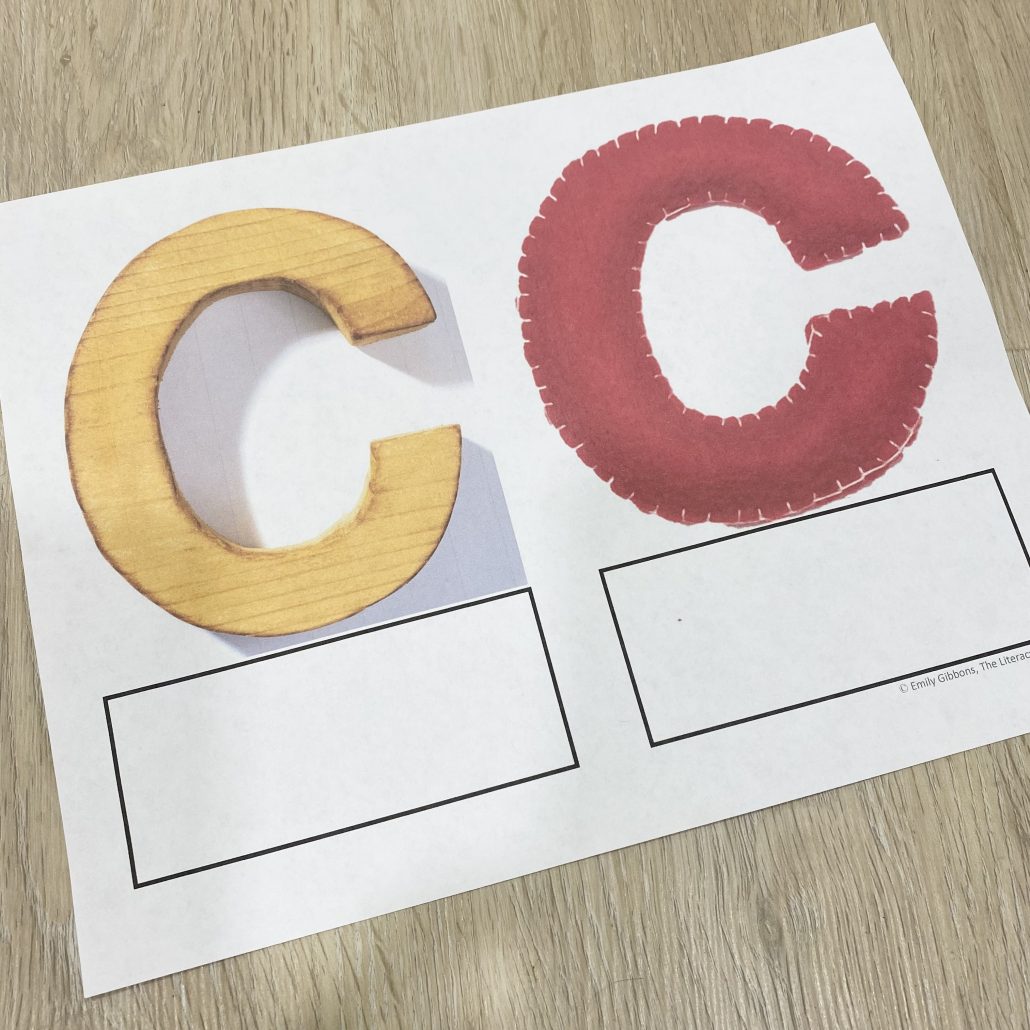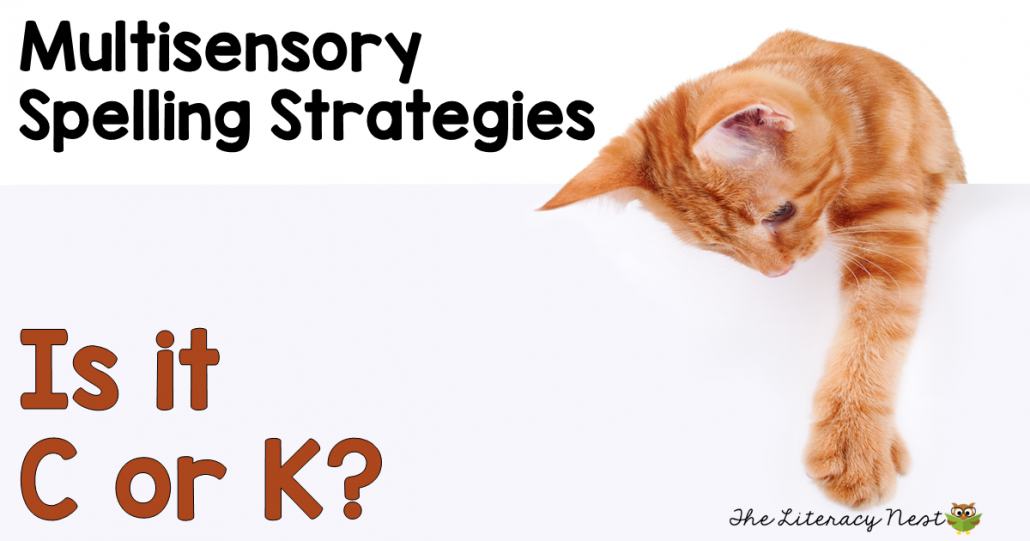Tips for Teaching Hard and Soft C Sounds
Letter names can often be confusing for young children just learning to read and can make learning sounds more challenging. Have you ever had a student who said that y said /w/ or w said /d/. Another place this tends to come up is with the letter c. Many students will identify the /s/ sound for c, when most of the words they are able to read use the hard c sound as in the words cat, cup and cake. So after initially having them put the soft c sound on the back burner, it can be difficult to build an understanding of when c makes its soft sound. Here are tips for teaching hard and soft c sounds

Prerequisites for Learning Soft c
To learn soft c, it is helpful for students to have a solid understanding of long and short vowel sounds, to be able to distinguish between vowel sounds, and to know at least closed and vce syllable types. It is helpful for students to know all the consonants.
Soft c seems to come most easily to students who have become proficient at the initial c/k spelling rule, sometimes known as the kitty cat rule. When spelling the /k/ sound at the beginning of a syllable, “K takes I and e. C takes the other three” is a catchy rhyme, but it isn’t quite complete. More accurately, k takes I, e and y; and c takes the other vowels as well as consonants.
Learning soft c is directly related to this spelling rule. The times when we must spell /k/ with a k, are the times when c would make its soft sound. I typically teach the initial c/k spelling generalization very early on when students are still learning to read and write CVC words. In contrast, I typically do not teach soft c until much later. Students have many more phonograms under their belt and are quite proficient at syllable division. They have generally become relatively automatic with the initial c/k rule and easily make the connection.
Challenges
Learning the soft c sound can be challenging for some students. For students that have difficulty distinguishing between vowel sounds, this can be problematic. Students who have difficulty remembering spelling rules or generalizations are more likely to struggle with this skill as well. One challenge that may arise is determining when to use -ce at the end of a word rather than -se. While there are some general tendencies, British and American English vary greatly and may differ in their usage of -ce vs -se spellings. For students who have difficulty learning what “looks right”, they should be encouraged to use a spelling resource to check when they are unsure of the correct spelling.
Using a Speech to Print Method
Particularly for spelling, the underpinnings of soft c are based in phonemic awareness skills. Students need to be able to hear and isolate the /s/ sound, but also must be able to analyze the sound that follows. Students need to link the known /s/ sound to the spelling c and to learn the visual patterns in which they will see the soft c. They need to build familiarity with the orthographic patterning of words that end in -ce for example. A logical sequence would be moving from identifying hard and soft c in spoken language (words, sentences and stories) to using the printed words, sentences and stories to predict the presence of the soft c sound.
Explicitly Teaching Hard and Soft C Sounds
Soft c is a remarkably consistent rule in English. It is worth the effort for students to explicitly learn the rules of when c makes the soft sound. Deliberate attention in the phoneme drill, blending drill and what says is important. Tracing or highlighting the orthographic patterns for the soft c sound as well as practice reading and writing words, sentences and stories with soft c is just as valuable as these procedures for a new vowel team.
Other ways to make this learning multisensory and memorable include the use of hand gestures or props. Making a c shape cut out of fabric to represent soft c and a wooden c to represent the hard sound can reinforce the language and concept in a very concrete way. Correctly reading and writing words with soft c often requires a great deal of practice.
You’ll find this free hard and soft c printable here. Use it to sort picture or word cards.
Students may benefit from an anchor chart or poster for quite some time. I find even some of my most advanced students will use the wrong sound for c on occasion during the blending drill or if reading nonsense words. A hand gesture or quick point at a poster can help students self-correct efficiently. Many students may have an easier time with the soft sound of c as part of vowel consonant e words. Introducing words such as rice, space may be an easier introduction to this concept for students that are struggling. It is important for students to not only recognize the role that final e plays in making the c sound soft, but also applying that final e when spelling words such as peace or juice.
Use Sorting Activities
One of the best ways to practice feature like soft c is through sorts. Students need to attend to the vowel in a word to correctly choose a sound for c. Sorts are a great way to practice locating and analyzing that important vowel. For example, students could sort nonsense words into hard and soft c sounds based on the vowel that follows the c. This is particularly useful for students that need to learn the rule but have a relatively large reading vocabulary. When students have a large sight vocabulary, it can be difficult to know if they are understanding and applying new concepts.
For students with less automaticity reading words, practice sorting and reading real words. They could range from simple closed syllables to more complex multisyllabic words. Reading the words after sorting is a way for students to check their sorting. For a more phonemic awareness focus, use pictures. Students can sort the images into words with a soft c or hard c sound and even make predictions about vowels and vowel spelling choices.
Games Make Wonderful Reinforcement
There are few better ways to reinforce complex learning than through play. Reading and spelling games with soft c provide students with practice that doesn’t feel too much like work. Often students will read a word far more times during a game of Go Fish than simply reading words from a list.
While reading with soft c is quite consistent, spelling is not quite so cut and dry. This is a time when it is appropriate to teach students about spelling options and use prompts such as “What other letter could be making that sound?” during SOS or dictation. Ultimately, a proficient reader and speller is able to be flexible trying multiple sounds or multiple spelling when necessary.
Teaching Hard and Soft C Sounds Resources
As mentioned above, teaching the C/K spelling generalization is a prerequisite to soft c. “Is it C or K?” is a helpful blog post for tackling this spelling generalization. If you haven’t taught it yet, this C or K Spelling Generalizations resource or this Initial C or K freebie may help.

Be sure to read Teaching Tips for Teaching Soft G Sounds!
Thank you for stopping by today!









